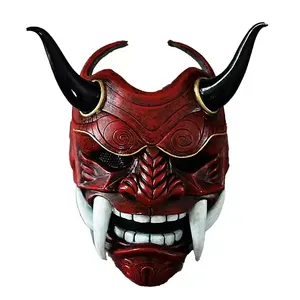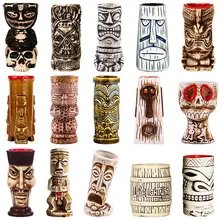Exploring the Art of Noh: The Noh Mask
The Noh mask is an emblematic element of the traditional Japanese performing arts. Originating from the classical Japanese Noh theatre, these masks are more than mere face coverings; they are a conduit for storytelling and character portrayal. The artistry behind each Noh theater mask reflects a deep cultural heritage, capturing a wide range of emotions and personas from Japanese folklore and literature.
Types and Designs of Noh Masks
There is a diverse array of Noh masks, each with its own distinct character and purpose. The Okina mask symbolizes a happy, elderly man and is often used in ritualistic dances. In contrast, the Hannya mask noh represents a tormented female demon, embodying deep-seated emotions of jealousy and sorrow. The Koomote mask showcases the youthful female, while the fox Noh mask is imbued with the cunning and intelligence of the animal it represents. Collectors and enthusiasts may also find the kslv Noh masks, a contemporary variation, which retains the traditional craftsmanship while infusing modern aesthetic elements.
Materials and Craftsmanship
The creation of a Japanese Noh mask is a meticulous process, often involving wood as the primary material. The Japanese wooden mask is carved and painted by skilled artisans who have honed their craft over years of dedicated practice. The hannya mask wood is particularly renowned for its intricate carving and expression of complex emotions. These masks are not only pieces of art but also functional items designed for performance, with careful attention to how they fit and move with the actor's face.
Functionality and Use
While deeply rooted in tradition, the Noh mask has found its place in contemporary settings. Its use extends beyond the stage of Japanese theatrical masks, becoming a cultural icon at themed events and masquerades. The adaptability of the Noh mask oni, representing demons and spirits, makes it a popular choice for various festivities, allowing wearers to embody their chosen character fully.
Cultural Significance and Modern Appeal
The traditional Noh mask carries with it centuries of Japanese culture, each one telling its own story. In modern times, these masks have transcended their original use, appealing to a global audience fascinated by their history and artistry. The kslv mask iterations, for example, showcase how traditional forms can inspire new artistic expressions, making the Noh mask relevant to contemporary art and fashion.
Conclusion
The Noh mask is a timeless piece of Japanese heritage, offering a glimpse into the past while continuing to inspire the present. Its evolution from the stage of Noh to the broader world of cultural expression underscores its enduring appeal and significance. For those captivated by the mystique of traditional Japanese art, the Noh mask remains an intriguing and captivating element of cultural identity.









































 浙公网安备 33010002000092号
浙公网安备 33010002000092号 浙B2-20120091-4
浙B2-20120091-4